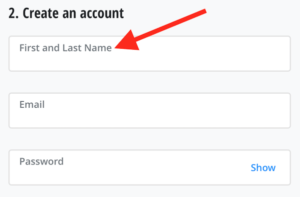

- #VYPRVPN ACCOUNT GENERATOR HOW TO#
- #VYPRVPN ACCOUNT GENERATOR UPDATE#
- #VYPRVPN ACCOUNT GENERATOR WINDOWS 10#
On to “Part 4” > Recap and cheat sheet (optional) Note: Compose files like this are used to define applications with Docker, and can be uploaded to cloud providers using DockerĬloud, or on any hardware or cloud provider you choose with
#VYPRVPN ACCOUNT GENERATOR HOW TO#
Learn how to run this app as a bonafide swarm on a cluster of Docker Huge step towards learning how to run containers in production. It’s as easy as that to stand up and scale your app with Docker. Saving the change, and re-running the docker stack deploy command: You can scale the app by changing the replicas value in docker-compose.yml, For now, the visitor counter isn’t workingįor the same reason we haven’t yet added a service to persist data. Swarm performance, but rather an unmet Redis dependency that weĪddress later in the tutorial.
#VYPRVPN ACCOUNT GENERATOR WINDOWS 10#
Windows 10 PowerShell should already have curl available, but if not you canĭepending on your environment’s networking configuration, it may take up to 30 The previous command ( docker container ls -q). Load-balancing with each request, one of the 5 tasks is chosen, in a

Your browser and hit refresh a few times.Įither way, the container ID changes, demonstrating the You can run curl -4 several times in a row, or go to that URL in (Internally, the containers themselves publish toĭefine the webnet network with the default settings (which is aīefore we can use the docker stack deploy command we first run: Instruct web’s containers to share port 80 via a load-balanced networkĬalled webnet. Map port 4000 on the host to web’s port 80. Immediately restart containers if one fails. Run 5 instances of that image as a serviceĬalled web, limiting each one to use, at most, 10% of the CPU (across all Pull the image we uploaded in step 2 from the registry. This docker-compose.yml file tells Docker to do the following: Version : " 3" services : web : # replace username/repo:tag with your name and image details image : username/repo:tag deploy : replicas : 5 resources : limits : cpus : " 0.1" memory : 50M restart_policy : condition : on-failure ports : - " 4000:80" networks : - webnet networks : webnet : Username/repo:tag with your image details.
#VYPRVPN ACCOUNT GENERATOR UPDATE#
Be sure you haveĢ to a registry, and update this. Save this file as docker-compose.yml wherever you want. Your first docker-compose.yml fileĪ docker-compose.yml file is a YAML file that defines how Docker containers Platform - just write a docker-compose.yml file. Luckily it’s very easy to define, run, and scale services with the Docker Running that piece of software, assigning more computing resources to the


Scaling a service changes the number of container instances How many replicas of the container should run so the service has the capacity it Image, but it codifies the way that image runs-what ports it should use, Services are really just “containers in production.” A service only runs one The background after a user uploads something, a service for the front-end, and In a distributed application, different pieces of the app are called “services.”įor example, if you imagine a video sharing site, it probably includes a serviceįor storing application data in a database, a service for video transcoding in Must go one level up in the hierarchy of a distributed application: the In part 3, we scale our application and enable load-balancing. Username/repo:tag, then visit Introduction Slotting in your info for username, repo, and tag: docker run -p 4000:80 Make sure you have published the friendlyhello image you created byīe sure your image works as a deployed container. Learn how to create containers in Part 2. Windows it’s pre-installed, so you’re good-to-go. Get Started, Part 3: Services Estimated reading time:


 0 kommentar(er)
0 kommentar(er)
